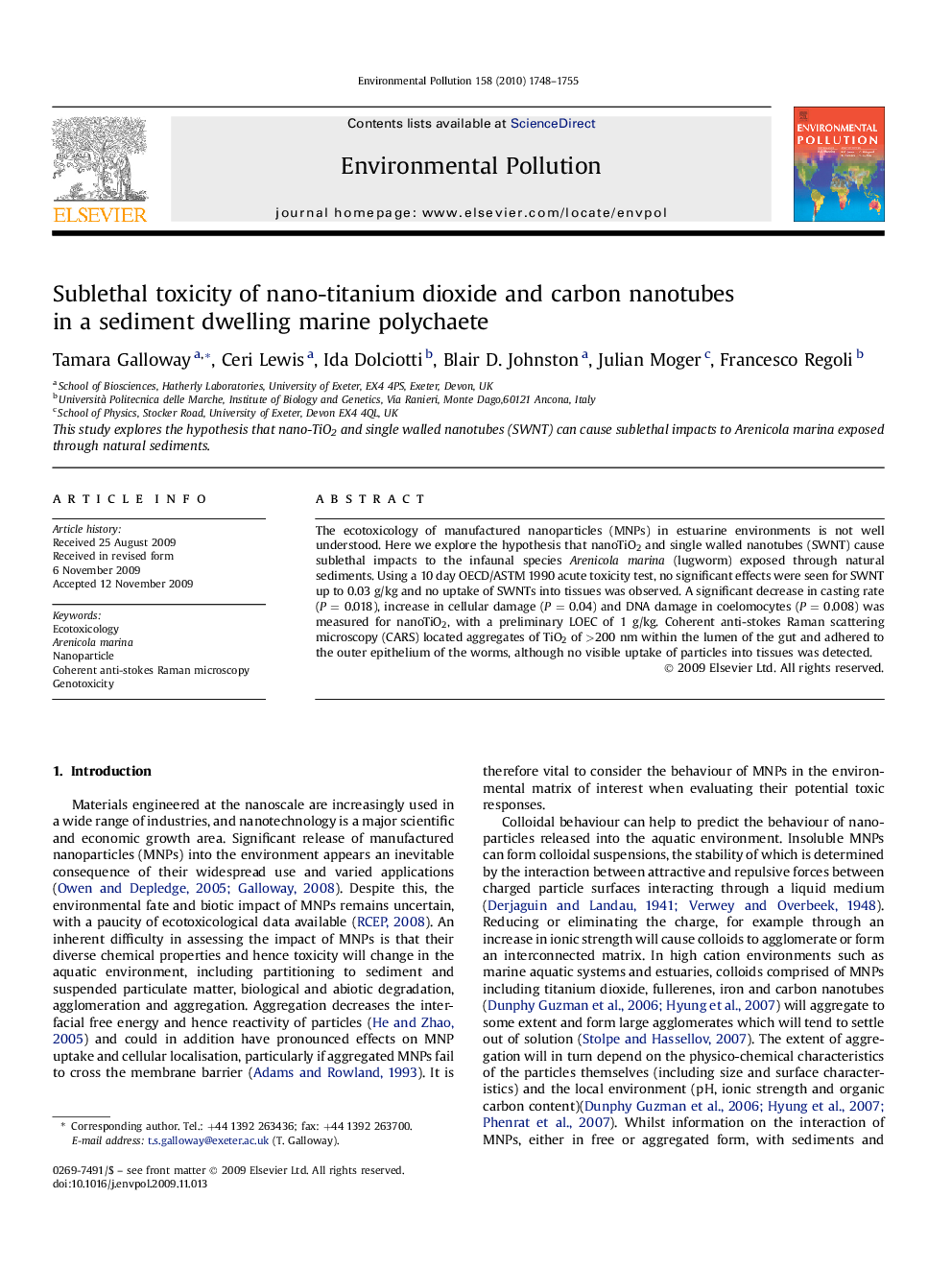| Article ID | Journal | Published Year | Pages | File Type |
|---|---|---|---|---|
| 4426164 | Environmental Pollution | 2010 | 8 Pages |
The ecotoxicology of manufactured nanoparticles (MNPs) in estuarine environments is not well understood. Here we explore the hypothesis that nanoTiO2 and single walled nanotubes (SWNT) cause sublethal impacts to the infaunal species Arenicola marina (lugworm) exposed through natural sediments. Using a 10 day OECD/ASTM 1990 acute toxicity test, no significant effects were seen for SWNT up to 0.03 g/kg and no uptake of SWNTs into tissues was observed. A significant decrease in casting rate (P = 0.018), increase in cellular damage (P = 0.04) and DNA damage in coelomocytes (P = 0.008) was measured for nanoTiO2, with a preliminary LOEC of 1 g/kg. Coherent anti-stokes Raman scattering microscopy (CARS) located aggregates of TiO2 of >200 nm within the lumen of the gut and adhered to the outer epithelium of the worms, although no visible uptake of particles into tissues was detected.
